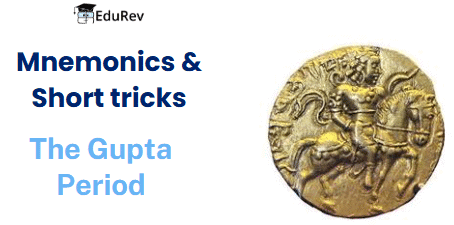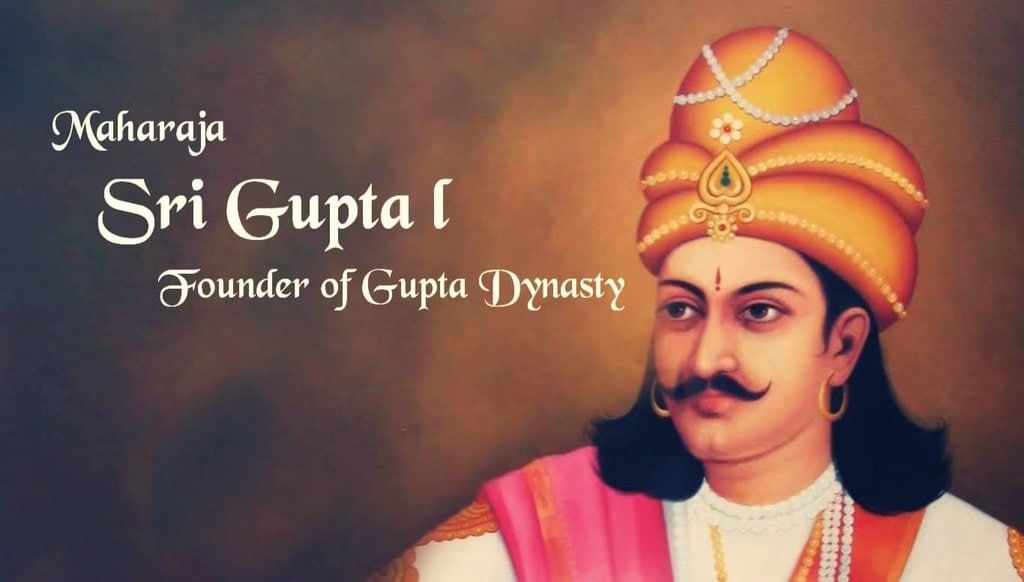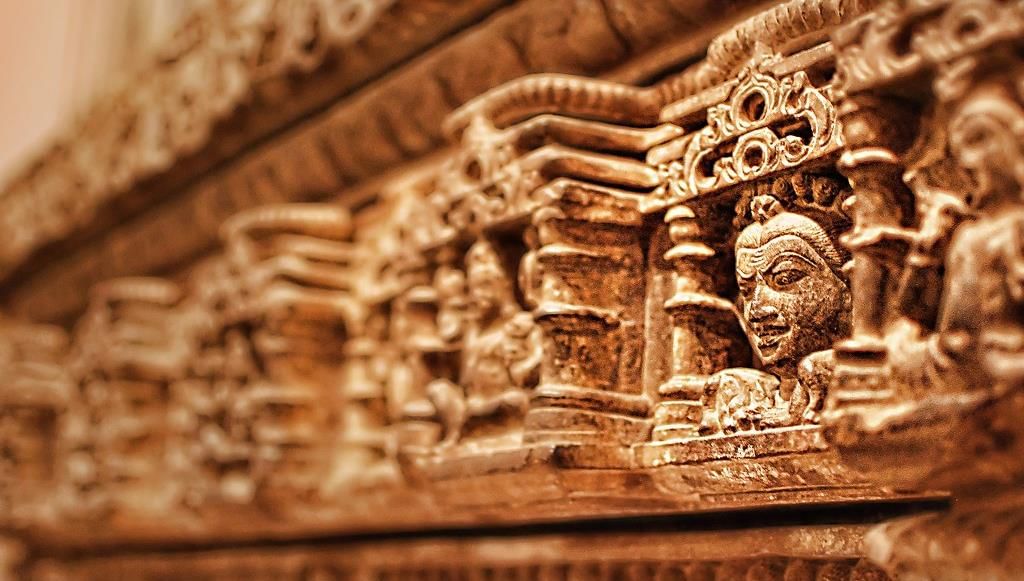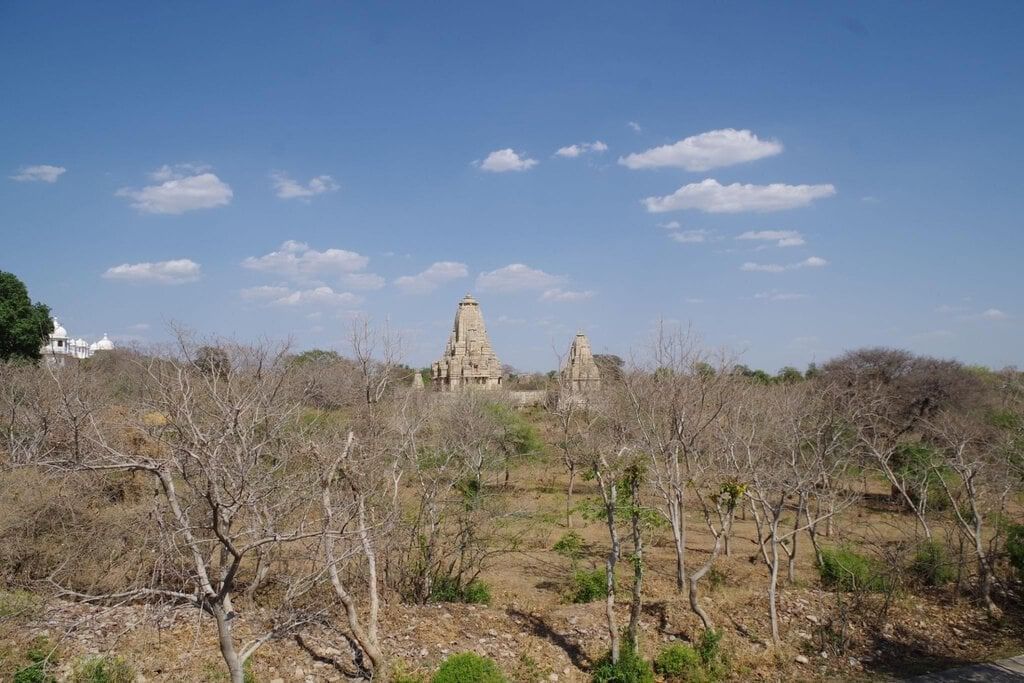UPSC Exam > UPSC Notes > History for UPSC CSE > Mnemonics: The Gupta Period
Mnemonics: The Gupta Period | History for UPSC CSE PDF Download
| Table of contents |

|
| 1. Rulers of Gupta Empire |

|
| 2. Art and Craft During Gupta Period |

|
| 3. Classification of Land |

|
| 4. Gupta Science & Technology |

|
| 5. Gupta Literature |

|
This document will help you remember important facts about the Gupta Empire in a simple and fun way. Inside, you'll find easy memory tricks (mnemonics) to help you recall key rulers, achievements, and contributions of this period.

You can use them along with your regular studies to remember things faster and better!
1. Rulers of Gupta Empire
Mnemonic: Some Good Cooks Serve Crispy Kachoris, Spicy Pani-Puri, Nice Bhature, Vada!
Mnemonic Explanation:
- Some: Sri Gupta (240–280 CE)
- Good: Ghatotkacha (280–319 CE)
- Cooks: Chandragupta I (319–335 CE)
- Serve: Samudragupta (335–380 CE)
- Crispy: Chandragupta II (Vikramaditya) (380–415 CE)
- Kachoris: Kumaragupta I (415–455 CE)
- Spicy: Skandagupta (455–467 CE)
- Pani-Puri: Puru Gupta (467–473 CE)
- Nice: Narasimhagupta Baladitya (473–495 CE)
- Bhature: Buddhagupta (495–532 CE)
- Vada: Vishnugupta (540–550 CE) (Last known ruler of the dynasty)
2. Art and Craft During Gupta Period
Mnemonic: Go Make Tasty Chocolate Treats!
Mnemonic Explanation:
- Go: Guilds
- Make: Metalworking
- Tasty: Terracotta Art
- Chocolate: Coin Minting
- Treats: Textile Production
3. Classification of Land
Mnemonic: Kolkata Kachori Always Very Good
Mnemonic Explanation:
- Kolkata: Kshetra (A special type of land capable of producing all kinds of crops)
- Kachori: Khila (Land that has not been cultivated for three years)
- Always: Aprahata (Defined as ‘unclaimed jungle land’)
- Very: Vasti (Habitable land )
- Good: GapathaSarah (Pastoral land)
4. Gupta Science & Technology
Mnemonic: Aloo Vada Dahi Famous- Aloo: Aryabhata
- Vada: Varahamihira
- Dahi: Dhanvantri
- Famous: Fa-Hien
5. Gupta Literature
Mnemonic: Krishna Ate Very Sweetly
- Krishna: Kalidasa
- Ate: Amarasimha
- Very: Vishakhadatta
- Sweetly: Sudraka
The document Mnemonics: The Gupta Period | History for UPSC CSE is a part of the UPSC Course History for UPSC CSE.
All you need of UPSC at this link: UPSC
|
210 videos|855 docs|219 tests
|
FAQs on Mnemonics: The Gupta Period - History for UPSC CSE
| 1. Who were the prominent rulers of the Gupta Empire? |  |
Ans. The prominent rulers of the Gupta Empire include Chandragupta I, who founded the empire, his son Samudragupta, known for his military conquests, and Chandragupta II, who expanded the empire and is often regarded as one of its greatest rulers.
| 2. What were the key features of art and craft during the Gupta period? |  |
Ans. The art and craft during the Gupta period are characterized by exquisite sculptures, intricate carvings, and fine paintings. Notable features include the depiction of Hindu deities, the use of vibrant colors in murals, and the development of classical dance and music.
| 3. How was land classified during the Gupta period? |  |
Ans. During the Gupta period, land was classified into several categories based on productivity and ownership. The main classifications included 'Vrihi' (rice land), 'Yava' (barley land), and 'Kshetra' (arable land). This classification helped in tax assessment and agricultural management.
| 4. What contributions did the Gupta Empire make to mathematics and science? |  |
Ans. The Gupta Empire made significant contributions to mathematics and science, including the concept of zero as a numeral, the decimal system, and advancements in astronomy, such as accurate calculations of planetary movements and the length of the solar year.
| 5. How did the Gupta Empire influence religion and philosophy? |  |
Ans. The Gupta Empire saw a revival of Hinduism and the birth of new philosophical schools, particularly Advaita Vedanta. The period was marked by the patronage of temples and scholars, leading to significant developments in religious texts and practices, along with the coexistence of Buddhism.
Related Searches




















